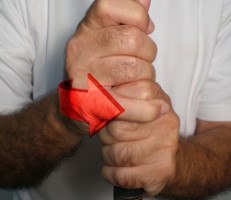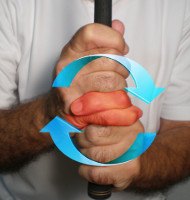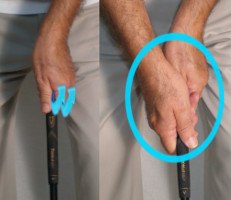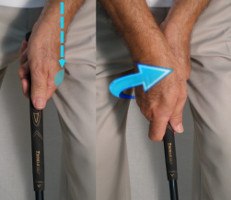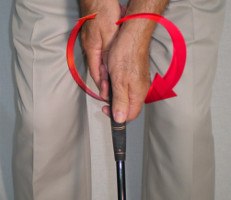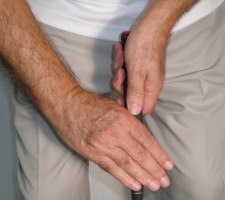Pros and Cons of Every Golf Grip Style |
Best Grip? Overlapping vs Interlocking |
Grip style: Interlocking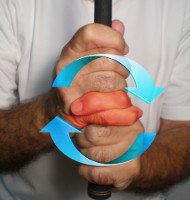 |
Hand position: Neutral |
Putting grip style / hand position: Cross-handed (left hand low)
|

From “Next Big Thing” to the “What Happened to That Guy” file, Paul Casey’s grip on golf stardom has been somewhat shaky.
In fairness, Casey’s career has been marked by setbacks. He tore a rib muscle in 2009 and had trouble shaking a case of turf toe in 2011. The next year, Casey dislocated a shoulder while snowboarding.
Through it all, the Englishman maintained the compact, powerful swing that drove his ascent. His grip is a fine one, too.
Casey sets up with his left hand neutral, the glove’s logo directed toward the target. His powerful right hand is perhaps a touch strong, rotated right so that the thumb and forefinger “V” points at his right collarbone. This is the preferred right hand position of many – if not most – modern pros.
Casey’s neutral grip allows him to squeeze plenty of power from his thick forearms – his nickname is “Popeye” – without sacrificing too much accuracy.
While he’s occasionally employed a cross-handed style, Paul Casey’s grip when putting is usually conventional and neutral. In fact, for all the publicity generated by belly putters, long putters and newfangled grips like the “Claw,” most of today’s pros continue using the tried-and-true reverse overlap grip with a standard-length wand.
When healthy, Casey has proved to be a steady putter. He’s finished on the plus side in the PGA TOUR’s “strokes gained putting” stat more often than not. That’s no surprise, really. You don’t win 14 international tournaments, make three European Ryder Cup teams and reach No. 3 in the World Golf Ranking without a solid stroke.
